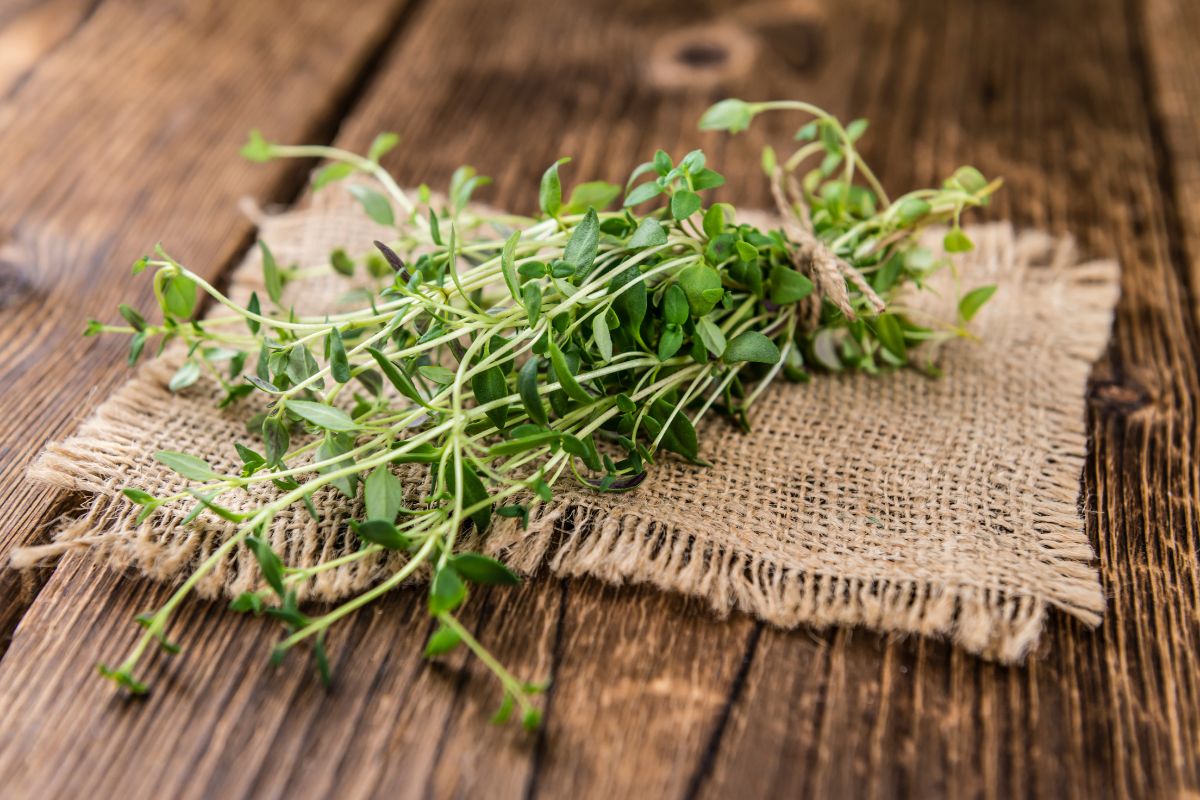Hello, gardening and cooking lovers! Today, I'm going to share with you a practical guide on how to plant thyme, um tempero que, uma vez experimentado, se torna indispensável na cozinha.
In addition to bringing an incredible aroma and unique flavor to dishes, thyme is a plant with many health benefits. So, how about learning how to grow it at home? Let’s go!
Getting to Know Thyme

Thyme is a subshrub native to Mediterranean countries that can grow up to 30 centimeters. As it is a small plant, it adapts very well to pots and planters, although it can also be grown in gardens and flowerbeds.
With a slightly citrusy and spicy flavor, as well as a fragrant aroma, thyme is a versatile herb that goes well with meats, soups, broths and vegetables. In Brazil, the most popular varieties are common thyme, lemon thyme and creeping thyme, all of which require similar cultivation care.
Benefits of Thyme
In addition to enriching dishes with its flavor and aroma, thyme is rich in vitamins C, D, B complex, iodine and iron. These properties make it an ally for heart health, the immune system and in the fight against free radicals.
Thyme also has antiseptic, anti-inflammatory and bactericidal properties, making it useful for relieving insect bites, fighting acne and helping the respiratory system.
How to Plant Thyme
Thyme can be grown from seeds, clump division, cuttings or from ready-made seedlings. Cuttings are the easiest way, and consist of cutting a branch from a healthy adult plant, submerging it in water until roots appear, and then planting it.
Choose a pot with a drainage system, use pebbles and gardening mulch to ensure water drainage, and mix soil with sand and/or limestone. Keep the pot exposed to sunlight and water daily in small quantities until the plant is established.
How to Grow Thyme
O tomilho é uma planta rústica e fácil de cultivar, mas requer alguns cuidados específicos. Prefere solo seco e arenoso, com boa drenagem. A adubação deve ser feita uma vez por ano, no outono, utilizando húmus de minhoca e torta de mamona.
The plant needs at least four hours of direct sunlight per day and grows well in temperatures ranging from 4ºC to 24ºC. As for watering, thyme prefers drier soils, so water only when the soil is dry to the touch.
Harvest and Extra Tips
Thyme is ready to harvest 60 to 90 days after planting seedlings, or up to 120 days if planted from seed. Harvesting can be done as needed or in bulk during the spring.
Remember to always leave a portion of leaves on the plant to ensure its renewal. In addition, dried thyme is more aromatic and flavorful than fresh thyme. When planted in gardens, thyme also serves as a beautiful ornamental option, attracting bees and butterflies.
Conclusion
Growing thyme at home is a wonderful way to always have this aromatic herb full of flavor and health benefits on hand. With the right care, you can enjoy fresh thyme in your recipes and also benefit from its medicinal properties.
Frequently Asked Questions
Can I plant thyme in an apartment?
Yes, thyme adapts very well to pots and planters, making it ideal for apartments.
What is the best time to plant thyme?
Thyme can be planted at any time of the year, as long as the light and temperature conditions are suitable.
How do you know when to water thyme?
Water thyme only when the soil feels dry to the touch. In warmer months, watering can be more frequent.
Does thyme need direct sunlight?
Yes, thyme needs at least four hours of direct sunlight a day to grow well.
How to use thyme in cooking?
Thyme can be used fresh or dried in meats, soups, broths, creams and vegetables, as well as being a healthy substitute for salt.
Can I plant thyme with other herbs?
Yes, but prefer to plant with herbs that have similar watering, light and fertilization needs, such as rosemary and lavender.
Did you like this amazing tip? If so, share it with your friends and on your social networks. Leave your comment below and your suggestions. Receive it daily here on our website. Blog of ideas and tips free and follow us on Google News too. Thank you!